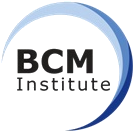Emerging Trends in Operational Resilience Auditing: A 2024 Report
 Operational resilience has become a top priority for organizations across industries, prompting the rise of specialized auditing practices.
Operational resilience has become a top priority for organizations across industries, prompting the rise of specialized auditing practices.
This report explores key emerging trends shaping the landscape of operational resilience auditing in 2024.
1. Increased Regulatory Scrutiny
Regulatory bodies worldwide are implementing stricter requirements for operational resilience, mandating regular audits and stress testing exercises. This drives demand for skilled auditors familiar with relevant regulatory frameworks.
2. Focus on Third-Party Risk Management
Modern businesses' interconnectedness amplifies third-party vulnerabilities' impact. Audits increasingly scrutinize third-party contracts, risk management procedures, and control environments to ensure supply chain resilience.
3. Integration with Cybersecurity Audits
The convergence of cyber and operational risks necessitates combined audits examining IT infrastructure, data security, and incident response capabilities alongside traditional operational resilience assessments.
4. Adoption of Technology-Assisted Auditing
Advanced analytics, artificial intelligence (AI), and automation are transforming how audits are conducted. These tools enable auditors to analyze vast datasets, identify hidden patterns, and streamline data collection, freeing time for deeper analysis and judgment.
5. Shift Towards Scenario-Based Testing
Static assessments give way to dynamic scenario-based testing that simulates real-world disruptions. This approach helps organizations refine their resilience plans and identify vulnerabilities under pressure.
6. Evolving Threat Landscape
Auditors must stay informed about emerging threats like climate change, geopolitical instability, and cyberattacks, continuously adapting their methodologies to address these dynamic risks.
7. Growing Demand for Skilled Professionals
The burgeoning field of operational resilience auditing creates a talent gap.
Training and certification programs are crucial to upskill existing professionals and attract new talent to meet the rising demand.
8. Emphasis on Business Continuity Management (BCM) Integration
Effective operational resilience relies on integrating resilience principles into existing BCM frameworks.
Auditors focus on ensuring BCM programs align with organizational objectives and address emerging threats.
9. Continuous Improvement and Learning
Operational resilience is an ongoing journey, not a destination.
Audits should emphasize the importance of continuous improvement, learning from incidents, and adapting resilience plans based on evolving threats and organizational changes.
10. International Collaboration and Harmonization
Harmonization across jurisdictions and industries is critical as regulations and best practices evolve.
International collaboration among regulators, auditors, and professional bodies is gaining momentum to facilitate knowledge sharing and consistent approaches.
By staying informed about these trends, audit professionals can adapt their practices, embrace new technologies, and contribute to building robust and adaptable operational resilience for organizations in the face of ever-changing risks.
Find out more about Blended Learning ORA-5000 [ORA-5] & ORA-300 [ORA-3]
|

















![Email to Sales Team [BCM Institute]](https://no-cache.hubspot.com/cta/default/3893111/3c53daeb-2836-4843-b0e0-645baee2ab9e.png)












![OR [Sustain] Questionnaires: Implement Training and Awareness](https://no-cache.hubspot.com/cta/default/3893111/f9696683-cec5-4914-ac3b-48962d7f5f9e.png)


![[ORA] Emerging Trends in Operational Resilience Auditing: A 2024 Report](https://blog.bcm-institute.org/hubfs/Operational%20Resilience%20Audit/CTA%20ORA%20Morepost/CTA_ORA_Emerging%20Trends%20in%20ORA%20a%202024%20Report.png)

![[ORA] Internal vs External Auditing of Operational Resilience: Roles, Responsibilities and Ethics](https://blog.bcm-institute.org/hubfs/Operational%20Resilience%20Audit/CTA%20ORA%20Morepost/CTA_ORA_Internal%20vs%20External%20OR%20Auditors.png)
